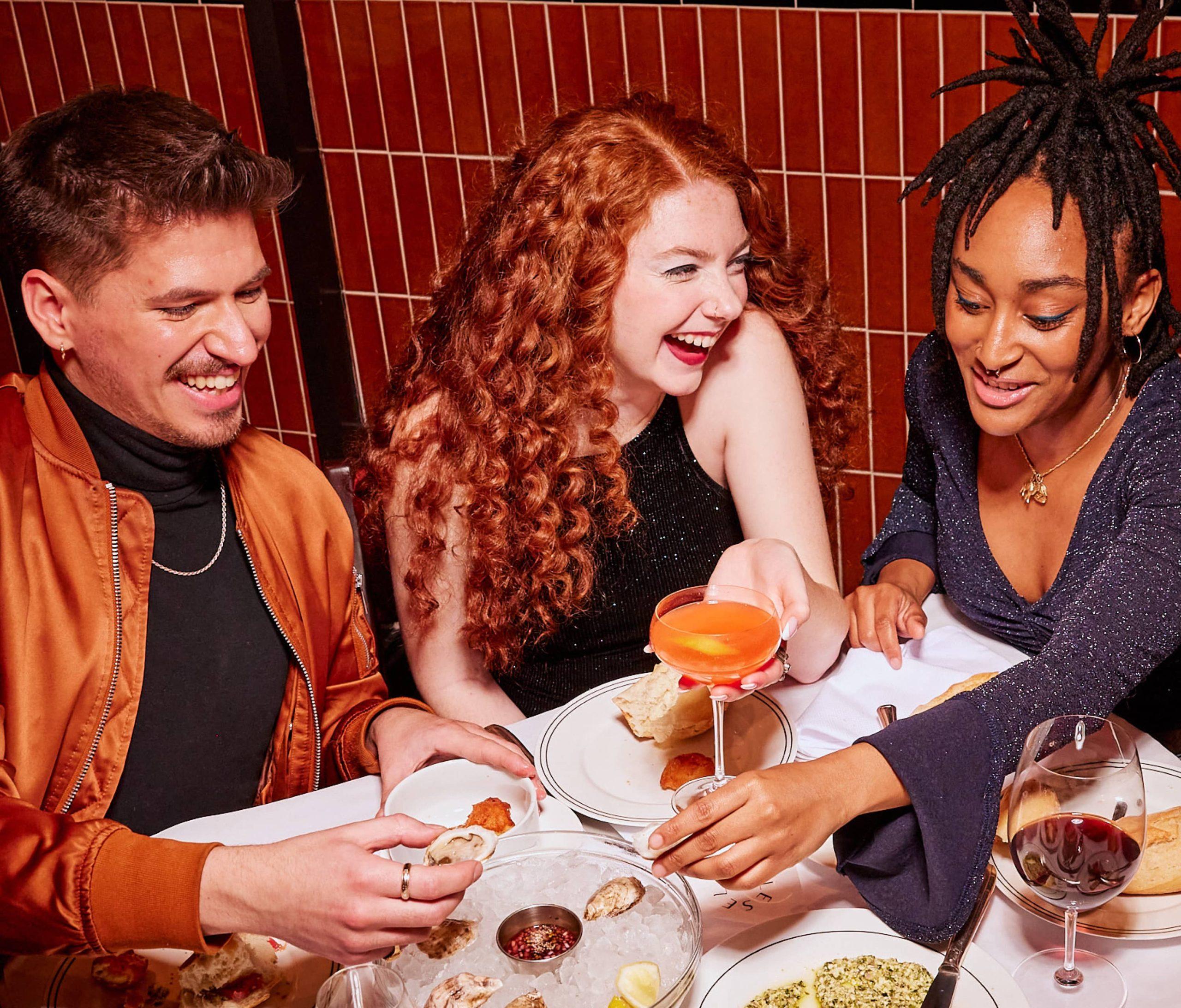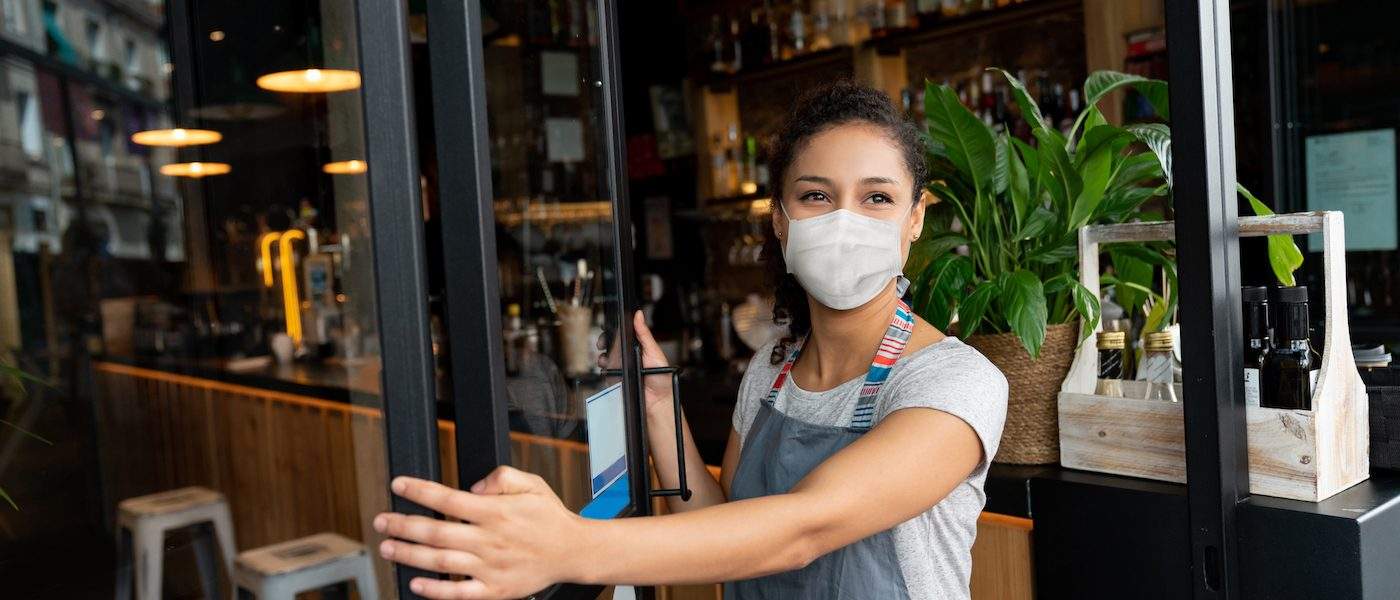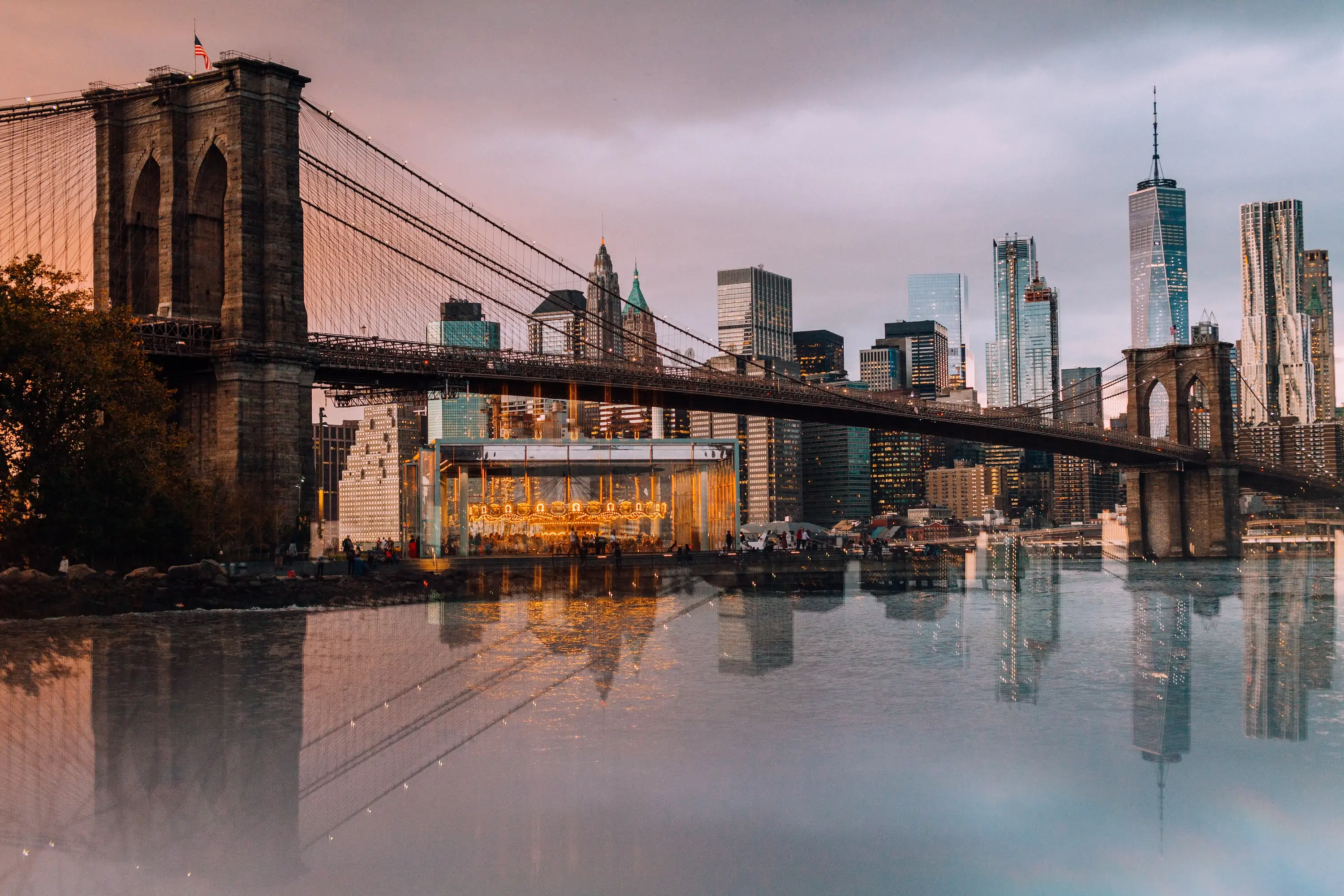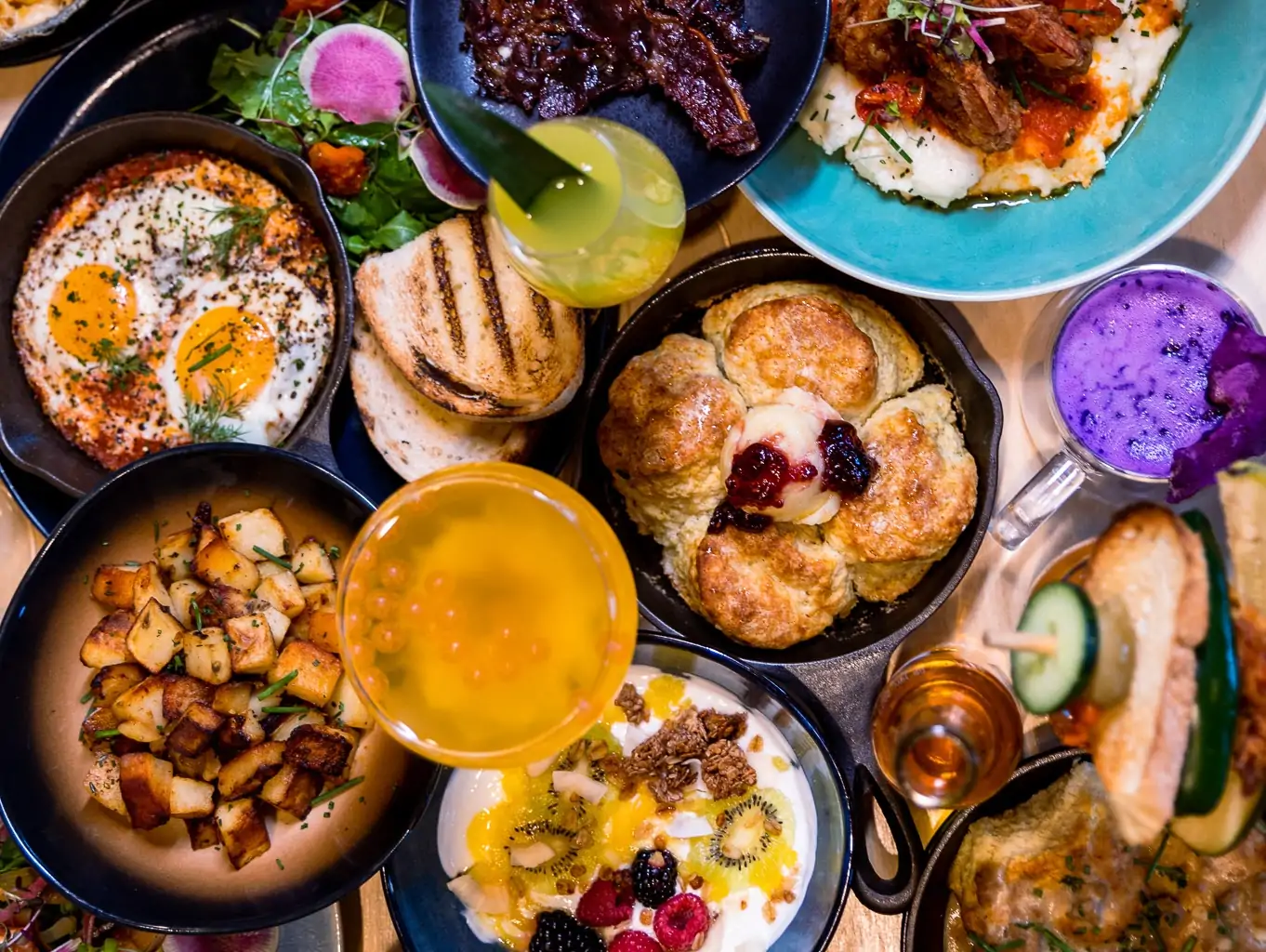Starting today––Monday, May 3, at noon EST––restaurant operators can begin applying for COVID-19 relief spending through the Small Business Administration’s Restaurant Revitalization Fund.
Navigating federal programs can be a challenge, especially in an already stressful time. To break it down, OpenTable hosted a roundtable discussion in partnership with Kevin Boehm, cofounder of Boka Restaurant Group and founding member of the Independent Restaurant Coalition, and Patrick Kelley, Associate Administrator for the SBA, to talk through the application process from start to finish: what the fund is, who qualifies, how to get started, and more.
During the conversation, Kelley urged restaurateurs to apply immediately. “We want to send a strong statement about the demand that’s on hand, so Congress will understand what they need to know to address it.”
Register to watch a recording of the conversation, and read on for tips and takeaways from the roundtable below.
What does the grant program look like?
In total, $21.6 billion is available to help restaurants get back on their feet in the wake of the coronavirus pandemic, and up to $10 million per business (with no more than $5 million per location). Restaurants are not required to repay the grants so long as the funds are used for eligible purposes by March 11, 2023. As Kelley summed it up, “The guiding principle is to get the most amount of money to the most amount of businesses in the shortest amount of time.”
Who is eligible?
Restaurants, bars, food trucks, distilleries, wineries, ice cream stands, and coffee shops are all eligible to receive grants, as are some wholesale businesses. For certain businesses, such as wineries, distilleries, bakeries, and brewpubs, the business needs to demonstrate that at least 33% of total sales occurred onsite in 2019 to qualify (food, drinks, bottles of beer, hats, or T-shirts all count). Note that the requirement only applies to 2019––if a business pivoted in 2020 and had no onsite sales, that’s fine. Similarly, if the same company changed concepts over the past year, it’s still eligible for grants.
The Restaurant Revitalization Fund isn’t just limited to small businesses. Businesses with 20 or fewer physical locations may apply, this would include any affiliates (entities in which operators have a 50% interest or more).
However, publicly traded and permanently closed companies are not eligible for funds. (Temporary closures with reopening plans are fine.) If a business is eligible for less than $1,000 (more on those calculations below), it also cannot access these funds.
How do you calculate grants?
There are three types of grant calculations, depending on how long businesses have been operating.
- For applicants in operation prior to or on January 1, 2019: 2019 gross receipts – 2020 gross receipts – PPP loan amounts
- For applicants that began operations partially through 2019: Average 2019 monthly gross receipts x 12 – 2020 gross receipts – PPP loan amounts
- For applicants who began operations on or between January 1, 2020 and March 10, 2021, and applicants who have not yet opened but incurred eligible expenses as of March 11, 2021: Add up eligible expenses between February 15, 2020 and March 11, 2021 – 2020 gross receipts – 2021 gross receipts (through March 11, 2021) – PPP loan amounts
*Note that state and federal relief funds and EIDL loans and products may be excluded from gross receipts, allowing for larger grants.
How and when can funds be used?
Once a business receives an award, it can use the proceeds until March 11, 2023. Examples of eligible expenses include:
- Business expenses, such as rent, payroll costs (including sick leave), utility payments, maintenance expenses, supplies (including PPE and cleaning materials), food and beverage expenses (including raw materials), supplier costs, and operator expenses (insurance, marketing fees, licenses, legal, POS equipment, and more).
- Construction expenses, including outdoor seating. (Note, however, that operators cannot expand their businesses or start new locations with the proceeds.)
- Business debt, such as payments on mortgage obligations and debt service (principal and interest––not including any prepayment). Credit card debt, equipment leasing and loans, and working capital are all eligible.
Who gets priority?
Women-owned businesses, veteran-owned businesses, and entities owned by socially and/or economically disadvantaged populations all receive priority. For the first two groups, that means 51% ownership or more, and certified as such.
For the latter group, businesses can self-certify on an honor system. Black, Hispanic, Native American, and Asian owned businesses fall into this category. For those not in these designated SBA groups, businesses may establish social disadvantage based on personal experiences of substantial and chronic social disadvantage which is the result of a distinguishing feature (i.e., race, ethnic origin, gender,physical disability).
Don’t be tempted to stretch the truth about ownership––as Boehm says, “Fraud stress is worse than COVID stress.”
How do people apply?
- Visit restaurants.sba.gov for a guided tour of the web application and to apply via the application portal.
- Apply through POS vendors including Square and Toast, which have embedded the government application for awards within their existing web apps. Since they have PII data stored, they can move swiftly with processing. Other POS vendors are also offering reports with data on gross sales receipts, such as Aloha and Clover.
(Applicants can also apply over the phone, though processing via mail will take much longer. Since funds will go quickly, any time loss is a disadvantage. Kelley’s tip: drive somewhere with a good internet connection, and apply on the website.)
For help applying, call the SBA call center at 1.844.279.8898, Monday through Friday from 8 a.m. to 8 p.m. EST.
Applicants will need the following documentation:
- Application: SBA Form 3172, completed, initialed, and signed
- Verification for Tax Information: IRS Form 4506-T
- Gross Receipts Documentation: Any of the following documents demonstration gross receipts and, if applicable, eligible expenses:
- Business tax returns (IRS Form 1120 or 1120-S)
- IRS Form 1040 Schedule C; IRS Form 1040 Schedule F, or for a partnership, IRS Form 1065 (including K-1s)
- Bank statements
- Externally or internally prepared financial statements, such as income statements or profit and loss statements
- Point-of-sale report(s), including IRS Form 1099-K
“The support and guidance provided by the SBA and the IRC is really astounding,” says OpenTable’s SVP of Global Field Sales Jenna Swigert, who also owns two restaurants in Bend, Oregon. “My biggest takeaway was DO NOT WAIT! There will likely be excess demand, and the funds will run out. Even if you are not part of one of the priority groups that will be funded in the first 21 days, it is important to submit your application as soon as the portal allows.”
Find more resources below:
- Portal website (opening Friday, April 30th for registration, with applications opening Monday, May 3rd at 12pm ET): restaurants.sba.gov
- SBA information page with official guidance, sample application, and more: sba.gov/restaurants
- IRC Restaurant Relief Fund FAQs: https://media-cdn.getbento.com/accounts/cf190ba55959ba5052ae23ba6d98e6de/media/DLhRNrdQ5aoYkU0HcFAJ_20210422_IRC_RRFFAQ.pdf
- How to find local SBA offices for assistance: sba.gov/local-assistance
- SBA call center: 1-844-279-8898
- Toast’s Grant Calculator: https://pos.toasttab.com/resources/restaurant-reopening-calculator
- Pretty much every question the SBA has received about the program and their answers: https://ussbaforgiveness.zendesk.com/hc/en-us/categories/360005965311-Restaurant-Revitalization-Fund-Knowledge-Base




